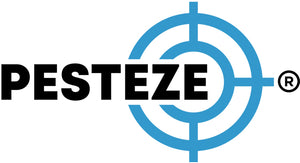RODENT ALLERGY & ASTHMA GUIDE: PREVENTION AND RELIEF

RODENT ALLERGY & ASTHMA GUIDE: PREVENTION AND RELIEF
SUMMARY
Rodents can be more than a nuisance—they’re a hidden trigger for allergies and asthma. Learn how to reduce exposure, clean effectively, and prevent infestations to improve indoor air quality and protect your family’s health. This guide provides essential prevention and relief strategies for rodent-related respiratory issues.
FEATURES
• Allergen Awareness: Understand how rodent droppings, dander, and urine contribute to allergic reactions and asthma flare-ups.
• Effective Cleaning Practices: Use safe cleaning methods to remove allergens without spreading harmful particles.
• Rodent Prevention Steps: Seal entry points and manage food sources to stop infestations before they start.
• Air Quality Improvement: Invest in HEPA filters and air purifiers to reduce airborne allergens at home.
• Medical Management: Learn how allergy testing and treatment plans can reduce long-term symptoms.
• Safe Professional Help: Know when to call certified pest control experts to remove rodents safely and hygienically.
GUIDE DESCRIPTION
Rodent infestations can severely impact indoor air quality, triggering allergies and asthma symptoms in sensitive individuals. Rodent urine, droppings, and shed fur contain proteins that can become airborne and easily inhaled, leading to sneezing, coughing, itchy eyes, and respiratory distress. Understanding how to identify, remove, and prevent these triggers is key to maintaining a healthy home environment.
The first step toward managing rodent-related allergies is identifying the problem early. Signs of infestation include droppings in corners, gnaw marks on food packaging, or faint odors. Once detected, focus on cleaning affected areas thoroughly but safely. Avoid sweeping or vacuuming droppings directly, as this can release allergens into the air. Instead, use disposable gloves, damp paper towels, and a disinfectant to clean surfaces. Allow the area to dry completely before resuming regular cleaning routines.
Improving your home’s air quality is another crucial step. High-efficiency particulate air (HEPA) filters capture tiny allergen particles that circulate indoors. Running air purifiers in common areas and bedrooms helps reduce exposure and provides relief for individuals with respiratory sensitivities. Keeping humidity levels low also discourages rodent activity and mold growth.
Preventing future infestations should be a top priority. Seal cracks, gaps, and holes around pipes, vents, and foundations using caulk or steel wool. Store food in airtight containers and ensure garbage bins are tightly closed. Reducing clutter and vacuuming regularly also make your home less appealing to rodents.
For ongoing allergy or asthma symptoms, medical consultation is essential. Allergy testing can pinpoint sensitivities, and treatments such as antihistamines, nasal sprays, or immunotherapy can help reduce reactions over time.
In cases of severe infestations, professional pest control may be necessary. Look for licensed services that specialize in humane and eco-friendly removal methods to ensure the safety of your home and family.
By combining prevention, cleaning, and medical management, you can significantly reduce the risk of rodent-related allergies and asthma, creating a cleaner, healthier living space for everyone.
- Aahna Barma


Comments 0